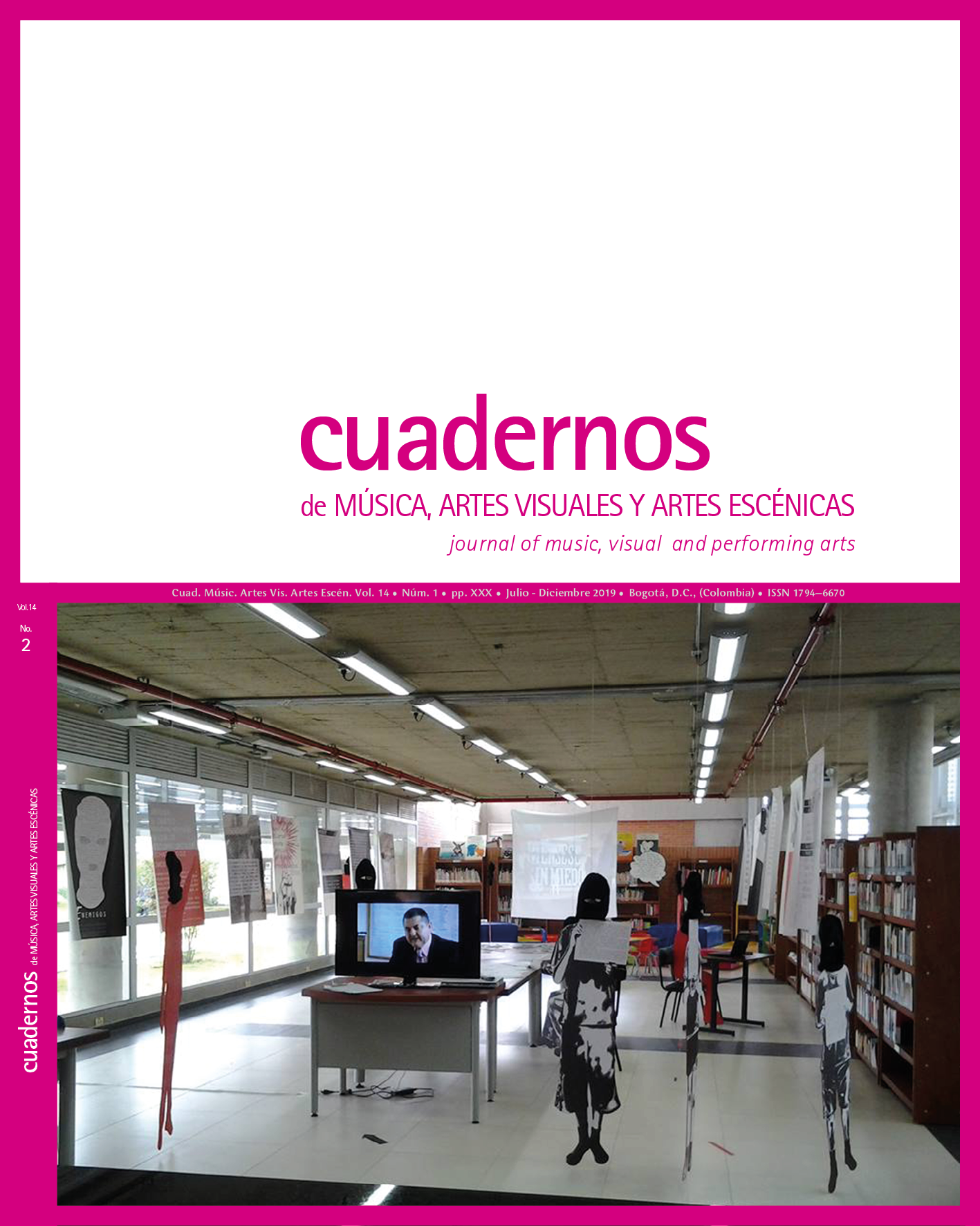Resumen
“Mi Casa Mi Cuerpo”, “La Casa de la Frontera” y “Radio Conversa” son propuestas de creación artística que ponen en primer plano la voz poética y política de diversas comunida- des en Colombia, a través de dispositivos estéticos y afectivos abiertos al encuentro y a la elaboración de distintas miradas y sentidos de realidad, en el contexto del conflicto armado interno que ha vivido el país en las últimas décadas, caracterizado por la complejidad de acontecimientos y formas de violencia. Estas propuestas acogen estrategias de las artes plásticas contem- poráneas y las ponen en relación con algunas prácticas prove- nientes de otras disciplinas académicas y de otras expresiones culturales. En este caso, los conceptos de cuerpo vibrátil, ar- chivo e imagen poética —principalmente— se vinculan con la autobiografía, los relatos de vida, las experiencias domésticas y barriales, los conocimientos ancestrales, entre otros. A partir de este soporte fundamental, “Mi Casa Mi Cuerpo”, “La Casa de la Frontera” y “Radio Conversa” pretenden apreciar los pro- cesos de memoria y los imaginarios de comunidades que han atravesado por situaciones de migración forzosa, desarraigo o exilio, en contraste con los mecanismos de control social que se implementan con la guerra y la inserción de políticas de exis- tencia vinculadas con las lógicas de un mundo consumido por el capital y el poder. Finalmente, el viaje emprendido tras la rea- lización de estas propuestas artísticas devuelve la mirada sobre el propio universo personal, devela la necesidad apremiante de una subjetividad activa, permeable a los encuentros, las conver- saciones y las sensibilidades colectivas como premisa para el advenimiento de los “mundos por venir”.
Arendt, Hannah. 2014. Walter Benjamin 1892-1940. París: Allia.
Arfuch, Leonor. 2002. El espacio biográfico: dilemas de la subjetividad contemporánea. Buenos Aires:
Fondo de Cultura Económica.
Bachelard, Gastón. 1999. La intuición del instante. México: Fondo de Cultura Económica.
Derrida, Jacques. 1997. Mal de archivo: una impresión freudiana. Madrid: Trotta.
Didi-Huberman, George. 2008. Cuando las imágenes toman posición. Madrid: A. Machado Libros.
— 2009. La imagen superviviente: historia del arte y tiempo de los fantasmas según Aby Warburg. Madrid: Abada.
— 2012. Supervivencia de las luciérnagas. Madrid: Abada.
Foucault, Michael. 2006. La arqueología del saber. México: Siglo XXI.
Guasch, Ana María. 2005. “Los lugares de la memoria: el arte de archivar y recordar”. Matèria: revista d’art 5: 157-183.
Hardt, Michael y Antonio Negri. 2005. Imperio. Barcelona: Paidós.
Jelin, Elizabeth. 2002. Los trabajos de la memoria. Madrid: Siglo XXI.
Lefebvre, Henry. 2013. La producción del espacio. Madrid: Capitán Swing Libros.
Moreno Escárraga, Óscar. 2014. Mi Casa Mi Cuerpo: migración forzosa, memoria y creación colectiva. Bogotá: Universidad Jorge Tadeo Lozano.
Rolnik, Suely. 2002. “El ocaso de la víctima: la creación se libra del rufián y se reencuentra con la resistencia”. Ponencia presentada en São Paulo S.A. Situação #1 COPAN, São Paulo, Brasil, 23-27 de noviembre.
Sabato, Ernesto. 2000. La resistencia. Buenos Aires: Seix Barral.
Sánchez, Gonzalo. 2009. Guerras, memoria e historia. Medellín: La Carreta Editores.
Sarlo, Beatriz. 2005. Tiempo pasado: Cultura de la memoria y giro subjetivo. Buenos Aires: Siglo XXI.
Santos, Milton. 2000. La naturaleza del espacio: técnica y tiempo, razón y emoción. Barcelona: Ariel.
Sennett, Richard. 2009. El artesano. Barcelona: Anagrama.
Valéry, Paul. 1990. Teoría poética y estética. Madrid: La Balsa de la Medusa.
Esta revista científica se encuentra registrada bajo la licencia Creative Commons Reconocimiento 4.0 Internacional. Por lo tanto, esta obra se puede reproducir, distribuir y comunicar públicamente en formato digital, siempre que se reconozca el nombre de los autores y a la Pontificia Universidad Javeriana. Se permite citar, adaptar, transformar, autoarchivar, republicar y crear a partir del material, para cualquier finalidad, siempre que se reconozca adecuadamente la autoría, se proporcione un enlace a la obra original y se indique si se han realizado cambios. La Pontificia Universidad Javeriana no retiene los derechos sobre las obras publicadas y los contenidos son responsabilidad exclusiva de los autores, quienes conservan sus derechos morales, intelectuales, de privacidad y publicidad.
El aval sobre la intervención de la obra (revisión, corrección de estilo, traducción, diagramación) y su posterior divulgación se otorga mediante una licencia de uso y no a través de una cesión de derechos, lo que representa que la revista y la Pontificia Universidad Javeriana se eximen de cualquier responsabilidad que se pueda derivar de una mala práctica ética por parte de los autores. Como consecuencia de la protección brindada por la licencia de uso, la revista puede publicar retractaciones o corregir la información ya publicada. La publicación de contenidos en esta revista no representa regalías para los contribuyentes.



